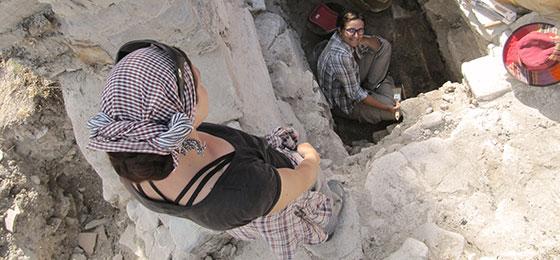Career funding: the researcher’s overall performance counts

The SNSF has adopted the DORA recommendations in its career funding schemes and adapted some other criteria. This will make the selection process even fairer and more inclusive of re-searchers with diverse career paths.
How does one perform a fair assessment of somebody's research achievements? For a long time the most important criterion was: have researchers published their articles in frequently cited journals? But the citation rate – or journal impact factor – does not represent an accurate and fair gauge of a researcher's achievements. For this reason, the so-called DORA declaration recommends a more inclusive approach. The SNSF signed the declaration in 2014 and has since been implementing it step by step.
A range of qualitative and quantitative criteria
The SNSF has now brought all of its career funding regulations into line with the DORA principles. As of August 2020, applicants should no longer indicate impact factors as they will no longer be of importance in the evaluation. Instead, the SNSF will give more weight to the quality of the entire research output. This includes publications as well as other areas such as cooperation with stakeholder groups, science outreach, datasets, software, patents, conference papers and prizes.
In addition, the evaluation will be based on quantitative criteria that are not linked to the impact factor of a journal. For example, the number of times an article has been cited can be of significance. It is an indicator of the applicants’ influence in their respective disciplines.
Net academic age in the evaluation
Another change concerns the academic age: for evaluation purposes, the SNSF will no longer consider how long someone has been in academia, but rather the total time they have spent doing research, i.e. the net academic age. Interruptions and periods of non-academic work can be deducted. By using this indicator, the SNSF will be able to make more accurate and fair comparisons among applicants.
It is important to note that this change only applies to the evaluation. For the time being, it will not affect calculation of the period between the doctorate and submission of the application, which will continue to be based on the overall academic age. Clearly defined deductions are permissible from the overall academic age, e.g. for interruptions such as maternity leave, care duties or further scientific training. For maternities, the SNSF deducts 18 months per birth, now also if the chlld was born before the doctorate.
Broad definition of mobility
Up until now, researchers needed to show that they had worked at a different higher education institution for some time. This formal requirement has been removed. The SNSF has replaced it with a broader definition of academic mobility that acknowledges the wide range of possible career paths. This broader definition includes, for instance, international collaboration or industry experience. However, time spent at a different higher education institution remains an important evaluation criterion for the Ambizione, Eccellenza and PRIMA schemes. This change of institution and other forms of mobility can now also take place during a grant.
More fairness and diversity
"By introducing these innovations, we are implementing the DORA declaration. We now assess researchers’ achievements according to comprehensive and even more precise criteria. In addition, we have made our participation requirements more flexible," says Marcel Kullin, head of the Careers division. "This will make the evaluation fairer and and more inclusive for researchers with diverse career paths.” At the same time, these measures by the SNSF promote diversity in research and will help Switzerland make the most of the potential of its young researchers.
DORA declaration
The DORA declaration (San Francisco Declaration on Research Assessment) recommends a more inclusive approach to evaluating research achievements. The declaration was published in 2012 by the American cell biology society in collaboration with journalists and publishing hous-es. So far, approximately 2000 scientific organisations and 16,000 researchers have signed the DORA declaration.